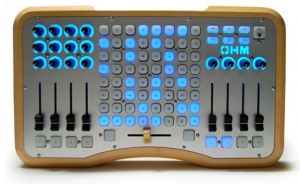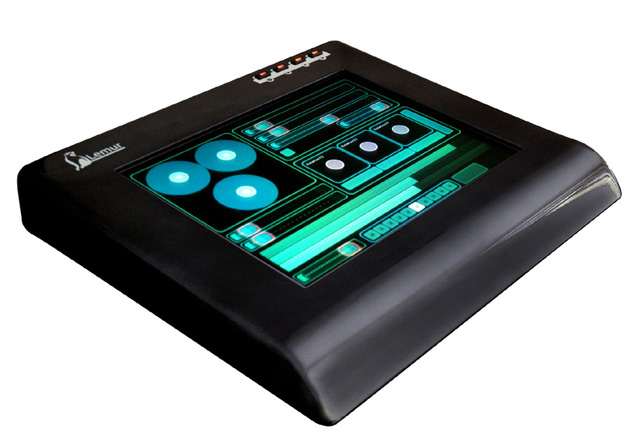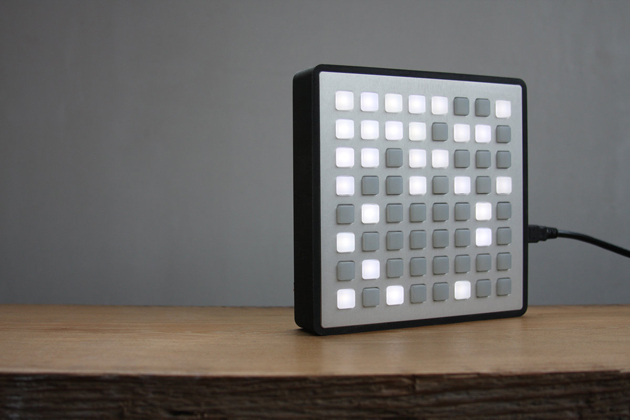 In the mid 00’s, there was a sudden flurry of innovation in the field of controller design. Manufacturers started working with artists and programmers and a flood of homebrew builders appeared on the scene, all spreading the word via blogs, websites and viral videos. A handful of these devices were heralded as “the next big thing,” or at least “the next big purchase,” and were quickly made objects of desire for many DJs or producers. Fast forward six or seven years and everything had changed. We’re spoiled by wireless controllers, drowning in innovative interfaces, waist-deep in endless customization options, but what about that first wave of supercontrollers? What if you still lust for one, but are no more solvent than you were in 2005?
In the mid 00’s, there was a sudden flurry of innovation in the field of controller design. Manufacturers started working with artists and programmers and a flood of homebrew builders appeared on the scene, all spreading the word via blogs, websites and viral videos. A handful of these devices were heralded as “the next big thing,” or at least “the next big purchase,” and were quickly made objects of desire for many DJs or producers. Fast forward six or seven years and everything had changed. We’re spoiled by wireless controllers, drowning in innovative interfaces, waist-deep in endless customization options, but what about that first wave of supercontrollers? What if you still lust for one, but are no more solvent than you were in 2005?
Tenori-On
Tenori-On in difficult to describe. Part interactive art project, part digital music controller, it was released in 2005 by Yamaha, and was met with a mixture of raised eyebrows and drooling mouths. It was a collaboration with Japanese artist Toshio Iwai. and features a square handheld frame, housing 256 backlit buttons on each side. While using the buttons to trigger patches and build sequences, a surreal light show is generated. Its hefty price tag and limited production numbers meant that it was not available to the majority of us.

However, iPad users are able to down load Yamaha’s TNR-i app, which mimicks the button-grid interface of the Tenori-On. It features the same button, grid layout, actually allows for much easier editing of the onboard patches, when compared to the tiny LCD display on the original device.
JazzMutant Lemur
The mother of all unattainable controllers was the Lemur. Notoriously complex and weighing in at over $3000, the fully customizable multi touch controller was often seen under the fingertips of Daft Punk, Bjork, Justice and Nine Inch Nails. But, as with the Tenori-On, JazzMutant have also created an app for iOS devices, simulating the original Lemur interface. However, at a fraction of the original Lemur’s price, the $50 app actually has several advantages over the original device. A higher resolution display, more accurate touch sensing and the ability to add and edit user patches.

Its an unusually stark representation at how quickly technology progresses, less than a decade ago, the Lemur and Tenori-On were unobtainable to the vast majority. Now you could buy them both for less than the price of a new pair of sneakers, all without leaving your chair.
Monome
Monome arguably has the most cool-points of any of these controllers. A sleek, minimalist grid of endlessly assignable buttons, it is produced in small numbers by a tiny team of meticulous enthusiasts. Used by deadmau5, Flying Lotus and Daedelus, it has a ring of unattainable exclusivity to it. The devices are notoriously difficult to get hold of, with long back-order lists waiting to be painstakingly constructed.

If painstaking contruction happens to be your thing, it’s possible to build your own Monome using the popular microcontroller Arduino. Arduinome is a community collaboration intended as a kind of tribute to the idea behind the original device. In order to build your own, you’ll need to be fairly technical, and very handy with a soldering iron.




